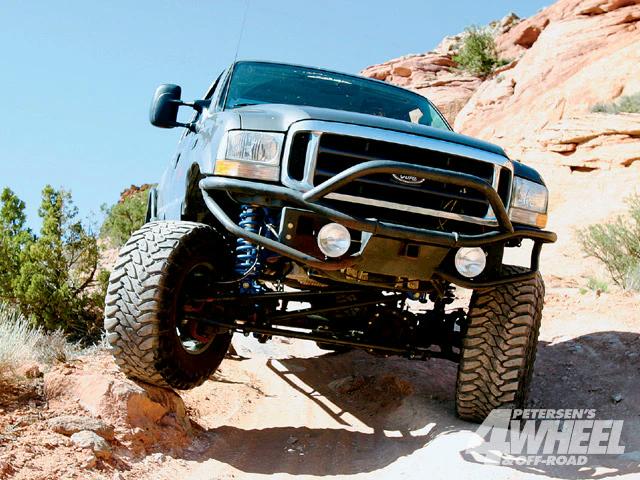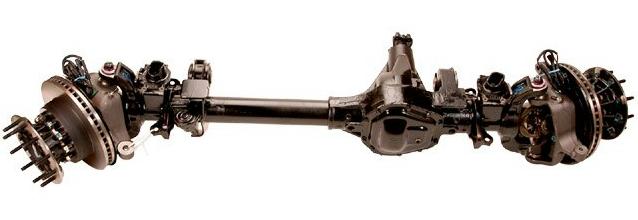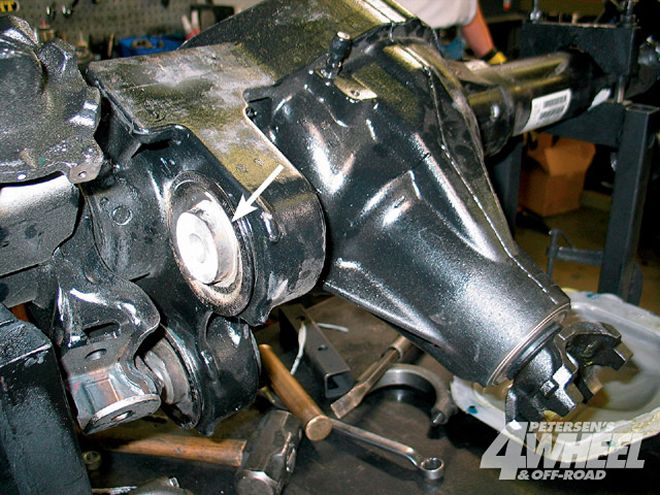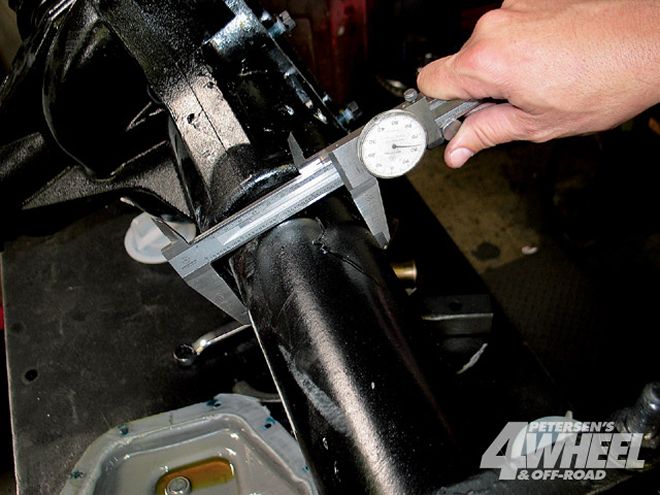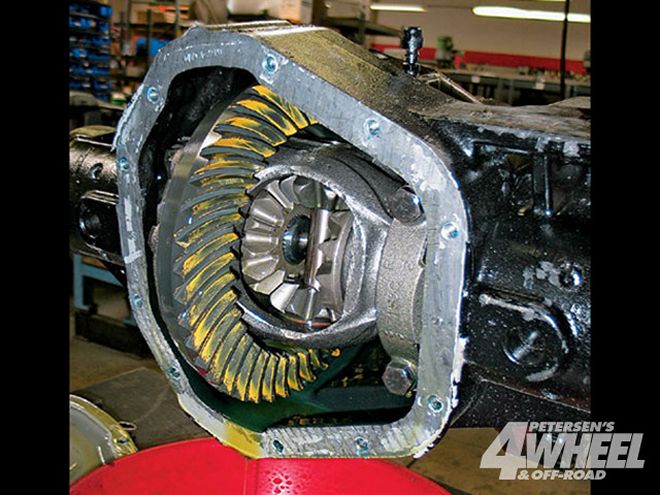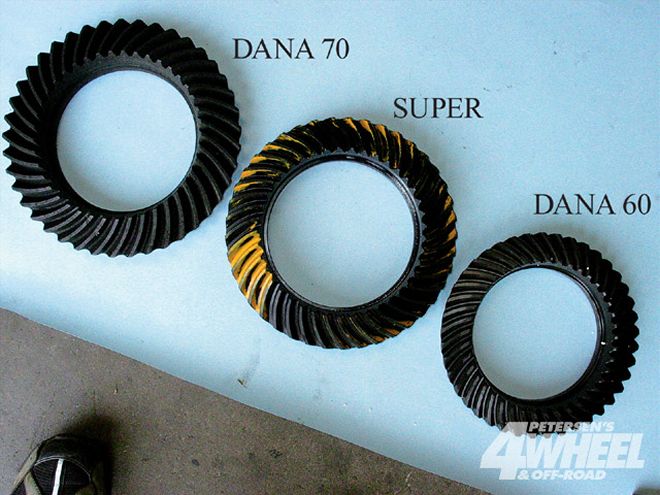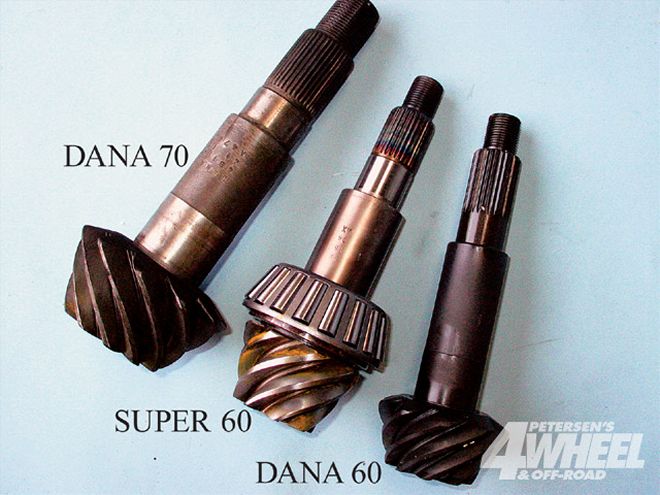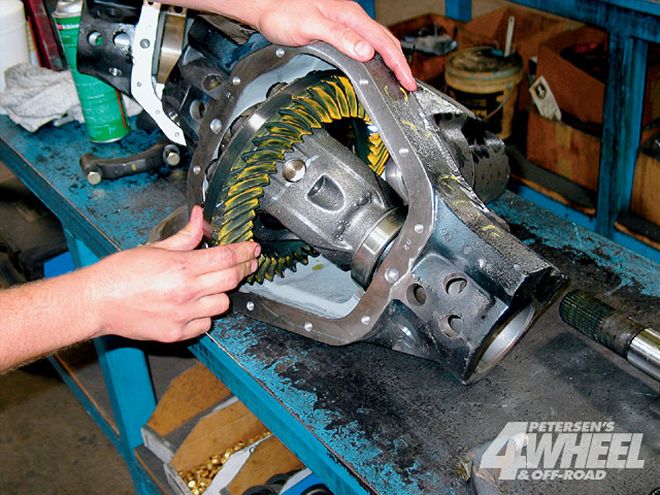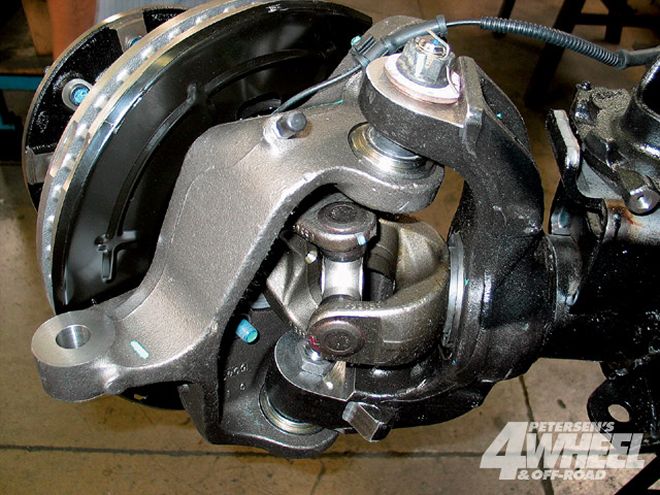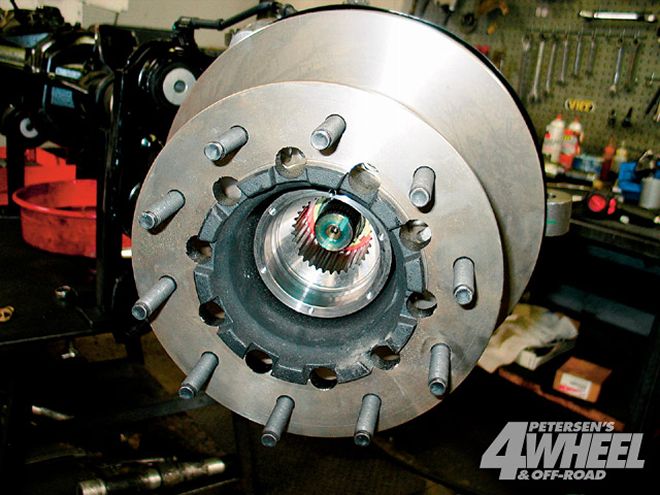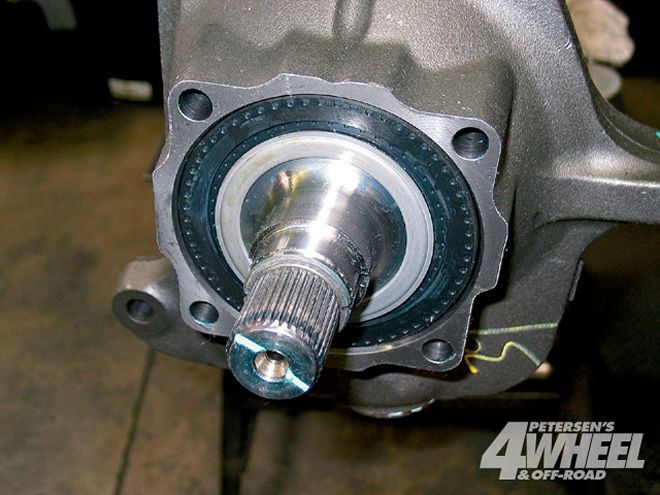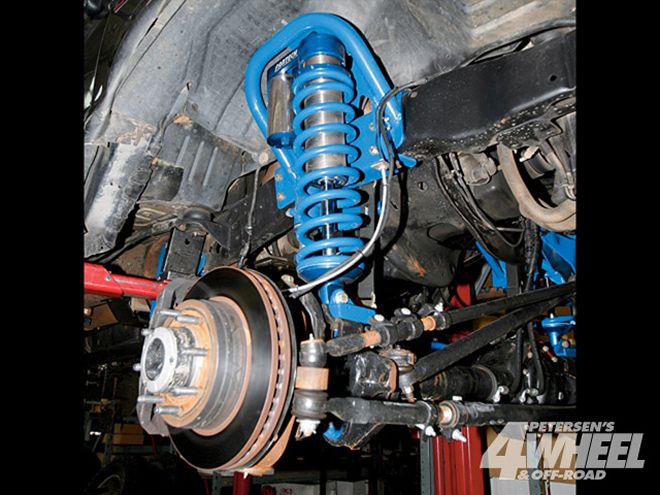The Dana 60 front axle may be the most coveted piece of off-road hardware in the industry. It earned its reputation because of its strength, the number of aftermarket parts available for it, and the fact that it has remained relatively unchanged over the last 30 years. Of course, even the mighty Dana 60 can benefit from an update every few decades-so in 2004 Ford and Dana released the new Dana Super 60 for use in F-450 and F-550 Super Duty trucks.
Referred to internally as the “Fat Boy”, the Dana Super 60 evolved from the 1978-1979 Dana 60 front axle first found under Ford F-250 and F-350 trucks. Keep in mind the original Dana 60 was designed for a 1-ton pickup with a 4,500-pound front gross axle weight rating (GAWR), 29-1/2 inch tall tires, 4.10 axle gears, and engines that made less than 170 hp. The Dana Super 60 on the other hand was designed for Ford F-550 trucks with nearly twice the weight capacity, 33-inch tires, 5.38 axle gears, and more than 600 lb-ft of engine torque.
So why should you care? Well, the new Super 60 eliminates the weaknesses (if you can call them that) of the standard Dana 60 and gives axle swappers a beefier front axle option to handle the largest tires and most powerful engines. It also improves a vehicle’s turning radius thanks to its larger U-joints and steering knuckles, which allow for a better steering angle.
When we first learned of the Super 60 we thought it would make a great upgrade for our 2002 F-250 Super Duty, which had a habit of busting axleshafts and U-joints. Swapping in the Super 60 meant ditching the leaf springs and converting the 10-lug axle back to eight lugs with wheel bearings from an 2005 F-350 and brake rotors from an 2004 F-450. Follow along as we take you inside the strongest 60 Dana has ever built.
The Dana Super 60 high-pinion front axle is based on the traditional Ford Dana 60-everything’s just a little bit bigger. The 84.74-inch-wide axle (an F-350 front axle is 69.8 inches wide) was designed for the ’05-and newer F-450 and F-550 Super Dutys, where it’s rated to support 7,000 pounds of gross axle weight (GAWR) and cope with more than 600 lb-ft of engine torque. The Super 60 is also available from Ford Racing as a complete assembly with 4.30 axle gears (PN M-3002-F4430) or 4.88 axle gears (PN M-3002-F4488).
The Dana Super 60 high-pinion front axle is based on the traditional Ford Dana 60-everything’s just a little bit bigger. The 84.74-inch-wide axle (an F-350 front axle is 69.8 inches wide) was designed for the ’05-and newer F-450 and F-550 Super Dutys, where it’s rated to support 7,000 pounds of gross axle weight (GAWR) and cope with more than 600 lb-ft of engine torque. The Super 60 is also available from Ford Racing as a complete assembly with 4.30 axle gears (PN M-3002-F4430) or 4.88 axle gears (PN M-3002-F4488) for around $4,000.
1. The cast-iron housing is unique to the ’05-and-newer Super Duty application and includes bushing mounts for the driver-side radius arm (arrow). The Super 60 casting is actually the same piece that’s used on ’05-and-newer F-250 and F-350 Dana 60 axles and uses the same shock mounts, coil spring hardware, track bar, and 1350-series pinion yoke.
2. The Super 60 axle uses 3 3/4-inch-diameter steel tubes that are 1/2 inch thick. For comparison, most Chevy, Dodge, and Ford Dana 60 front axles use 3-1/8 inch-diameter tubes that are 3/8 inch thick.
3. Conventional Dana 60 axles use 9-inch diameter ring gears. The Super 60 uses a larger 10-inch-diameter ring gear for more tooth contact and improved strength. The Super 60 carrier is also new and features net-formed spider gears, but it is dimensionally identical to traditional Dana 60 pieces. That means the Super 60 will accept all aftermarket Dana 60 lockers and limited slips.
4. The Super 60’s ring gear diameter makes it 1/4 inch larger than other Dana 60s and about 1/2 inch smaller than a Dana 70.
5. The Super 60 pinion gear’s (5.38:1 pinion shown) shaft diameter, spline count, and bearing placement are the same as a conventional Dana 60, but the gear contact area is larger to take advantage of the increased ring gear size.
6. A Ford engineer told us that the 10-inch-diameter Super 60 ring-and-pinion gears should bolt in to older Ford high-pinion Dana 60 axles. We proved that theory by placing a Super 60 ring gear and carrier in a Dynatrac Pro 60 housing. Unfortunately, the 10-inch ring gear wouldn’t fit into Dynatrac’s high-clearance Pro Rock 60 housing.
7. The biggest advantage of the Super 60 is that it has massive steering U-joints that are stronger and allow more steering angle than other Dana 60 axles (45 versus 38 degrees). Regular Dana 60s use 1480-series U-joints (SPL 55) that measure 4% inches across. The Super 60 has 1550-series U-joints (SPL70) that measure 5 inches across. In order to fit the larger U-joint, the Super 60 uses larger end-forgings with larger greaseable ball joints.
8. Now for the downside. The Super 60 uses a 10-on-225mm wheel bolt pattern, requires 19-1/2 inch wheels to clear the 14.53-inch rotors, and is about 15-inches wider than a traditional Dana 60. Also keep in mind that the Super 60 axle that Ford Racing sells doesn’t include locking hubs, calipers, or steering links either.
9. The good news is that the Super 60 uses 1-1/2 inch, 35-spline inner and outer axle-shafts. Plus, if you remove the 10-lug unit bearing, you can bolt on the 8-on-170mm unit bearings from ’05-and-newer F-350s. Doing so narrows the axle nearly 10 inches and allows you to use 20-inch Super Duty wheels.
10. Swapping over to unit bearings with a 8-on-170mm wheel bolt pattern requires 14.53-inch brake rotors from an ’04 Ford F-450 (Brembo PN 27271). In order to install an ’05 Super 60 in our ’02 F-250 we used Fabtech Motorsports’ four-link conversion kit, a set of ’05 F-350 locking hubs, ’05 Ford F-350 unit bearings, ’05 F-550 brake calipers, and ’04 F-450 brake rotors.
Resource:

